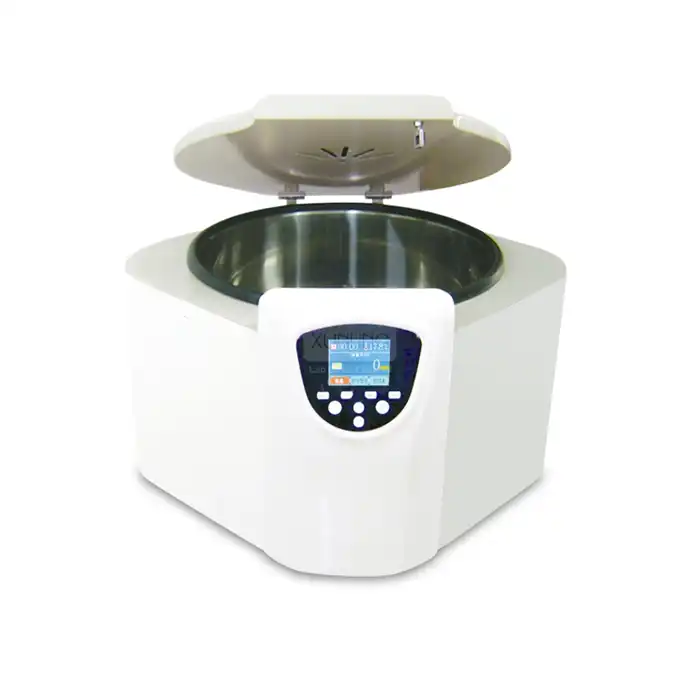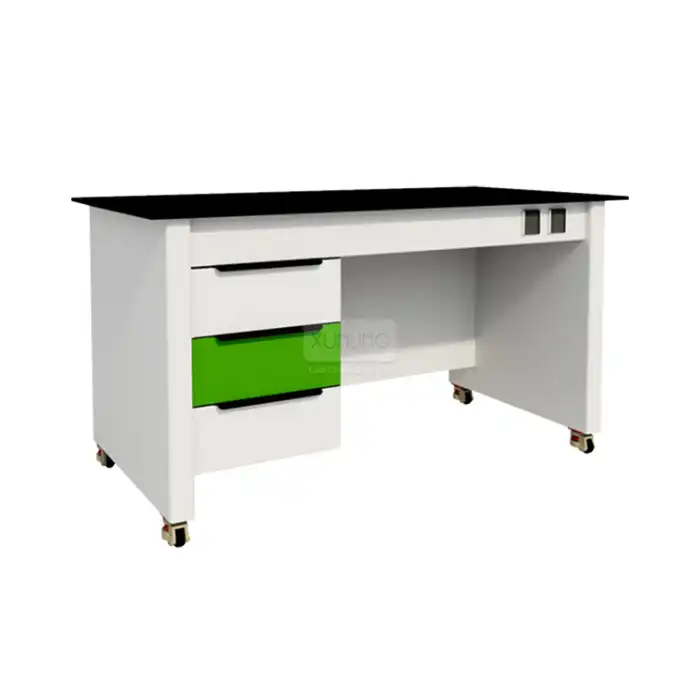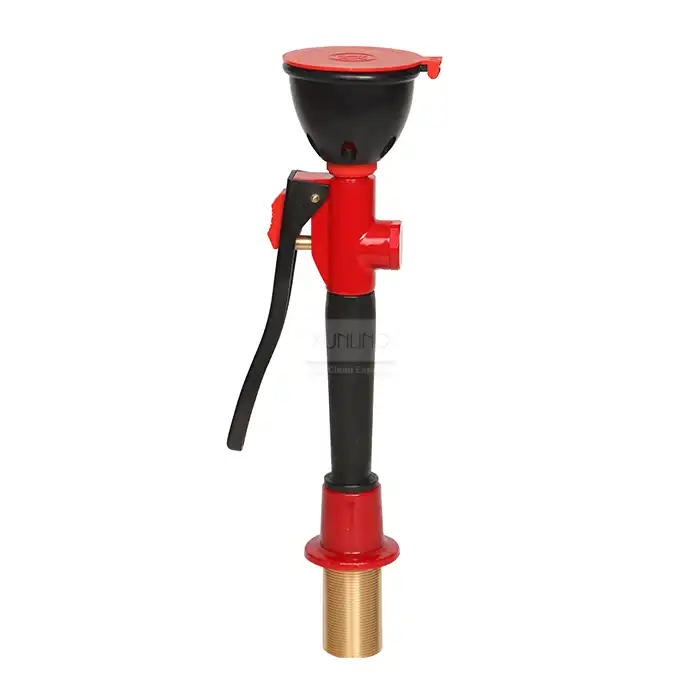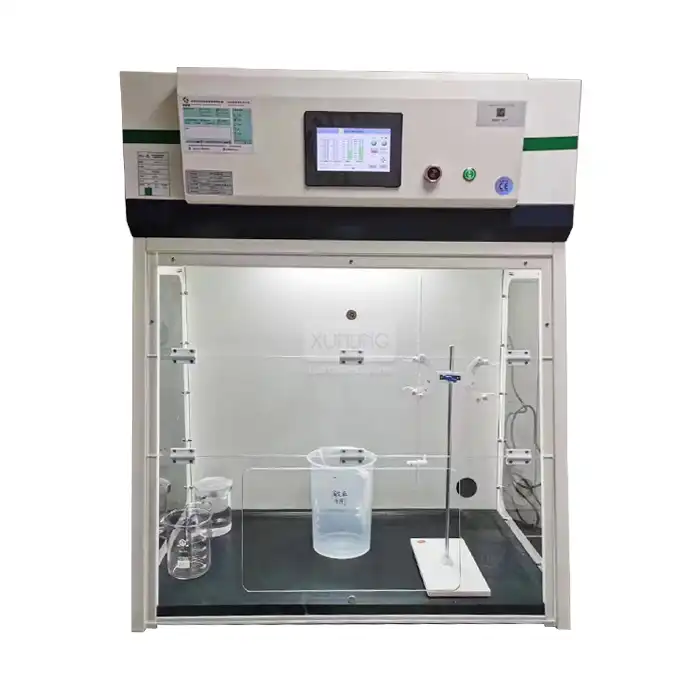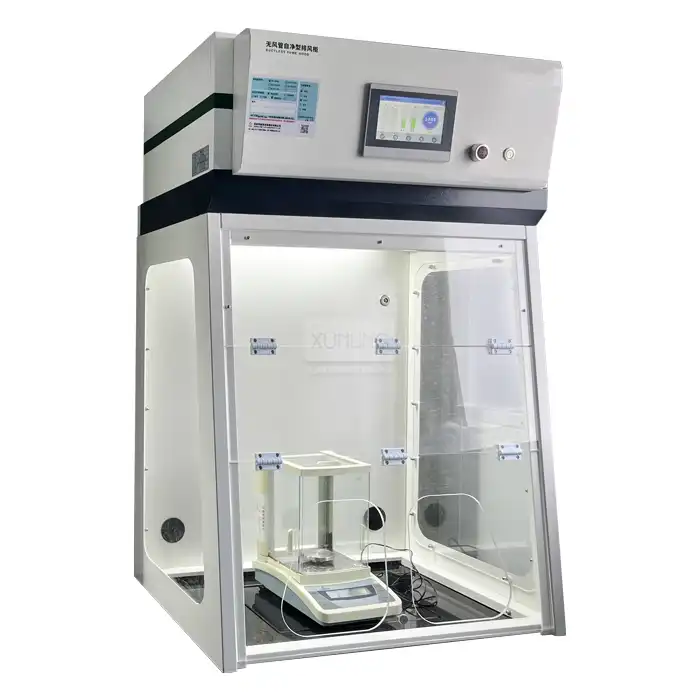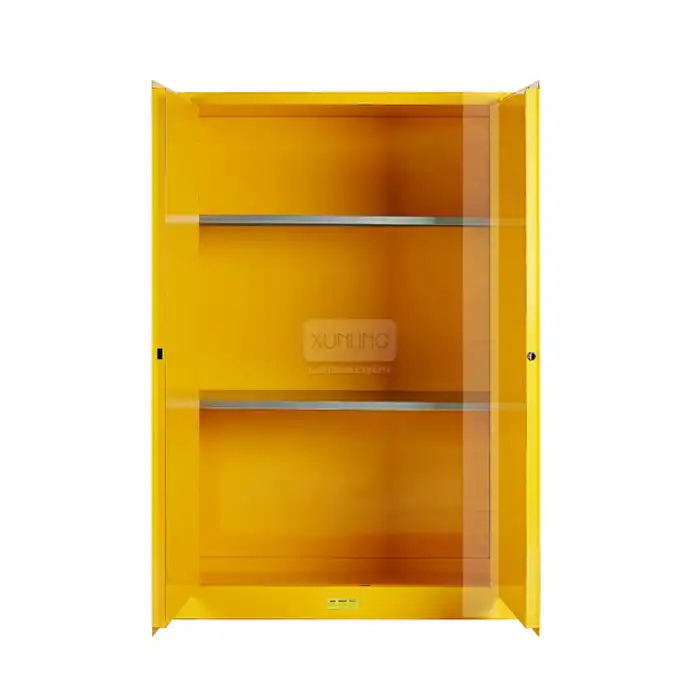
What Features Should I Look for in a Table Top Fume Hood?
2025-05-07 16:20:00
When setting up a laboratory environment, selecting the right safety equipment is paramount. Table top Fume Hoods are essential components for laboratories where space is limited but protection from hazardous fumes, vapors, and particles is necessary. These compact yet powerful ventilation systems provide a controlled work area that captures, contains, and exhausts harmful substances, ensuring the safety of laboratory personnel. With numerous options available in the market, understanding the critical features to look for in a table top fume hood is crucial for making an informed decision that aligns with your laboratory's specific requirements and safety standards.
Essential Safety Features of Modern Table Top Fume Hoods
Advanced Airflow Management Systems
The cornerstone of any effective table top fume hood is its airflow management system. Modern table top fume hoods incorporate sophisticated aerodynamic designs that optimize airflow patterns, ensuring consistent and efficient capture of hazardous substances. These systems typically feature specially designed baffles and airfoils that minimize turbulence and prevent dead zones where contaminants might accumulate. Advanced table top fume hoods now come equipped with real-time airflow monitoring capabilities that continuously measure and display face velocity readings, alerting users if airflow falls below safe operating parameters. This constant vigilance helps maintain a protective barrier between laboratory personnel and potentially harmful substances. Additionally, many premium table top fume hood models incorporate variable air volume (VAV) technology that automatically adjusts exhaust rates based on sash position, optimizing energy efficiency while maintaining safe operating conditions. This adaptive functionality not only enhances safety but also contributes to sustainability goals by reducing unnecessary energy consumption when the hood is not in active use.
Robust Construction Materials and Chemical Resistance
The durability and chemical resistance of a table top fume hood's construction materials directly impact its longevity and safety performance. High-quality table top fume hoods feature work surfaces made from materials specifically engineered to withstand aggressive chemicals, high temperatures, and heavy use. Premium options include epoxy resin, which offers excellent resistance to acids, bases, solvents, and heat, or phenolic resin, which provides similar chemical resistance with added durability. The interior walls and baffles of superior table top fume hoods are typically constructed from chemical-resistant materials such as fiberglass-reinforced polyester, stainless steel, or specially coated aluminum that can withstand continuous exposure to corrosive substances without degradation. This resistance prevents contamination of experiments and protects the structural integrity of the hood itself. Furthermore, advanced table top fume hood designs incorporate seamless construction techniques that eliminate crevices and joints where chemicals might accumulate, making cleaning easier and reducing the risk of cross-contamination between different experimental procedures. These thoughtful design elements ensure that your table top fume hood remains a reliable safety barrier throughout its operational lifetime, even in laboratories handling particularly aggressive or reactive substances.
Intuitive Control Systems and Alarms
Modern table top fume hoods feature sophisticated yet user-friendly control systems that enhance both safety and operational efficiency. Premium models incorporate digital control panels with touch-screen interfaces that provide instant access to all hood functions and real-time performance data. These systems often include programmable operation modes that can be customized to specific experimental protocols, ensuring consistent safety parameters across different procedures. Comprehensive alarm systems represent another critical safety feature in high-quality table top fume hoods. These systems monitor multiple parameters simultaneously, including face velocity, sash position, exhaust flow, and filter saturation (in ductless models). Visual and audible alarms activate when any parameter deviates from safe operating ranges, immediately alerting users to potential hazards. Some advanced table top fume hood models even integrate with building management systems, allowing for centralized monitoring and automated emergency protocols in case of system failures. Additionally, many contemporary table top fume hoods feature data logging capabilities that record operating parameters over time, providing valuable documentation for regulatory compliance and facilitating ongoing performance optimization. This combination of intuitive controls and comprehensive monitoring ensures that laboratory personnel can focus on their work with confidence, knowing that their table top fume hood is providing consistent protection.
Technical Specifications to Consider
Airflow Performance and Certification Standards
When evaluating table top fume hoods, airflow performance specifications should be a primary consideration as they directly impact containment efficiency and user safety. Industry standards typically recommend face velocities between 80-120 feet per minute (fpm) for optimal containment of hazardous substances without creating turbulence that might compromise performance. High-quality table top fume hood manufacturers provide detailed airflow data, including containment testing results performed under standardized conditions such as ASHRAE 110 or EN 14175 protocols. These tests evaluate the hood's ability to contain and exhaust contaminants under various operating conditions, providing quantifiable metrics of performance reliability. Premium table top fume hoods often exceed minimum containment requirements, offering enhanced safety margins for laboratories handling particularly hazardous materials. When reviewing technical specifications, look for table top fume hood models that have undergone third-party certification to validate manufacturer claims. Organizations such as NSF International, Underwriters Laboratories (UL), and the Scientific Equipment and Furniture Association (SEFA) provide independent verification of performance claims and compliance with safety standards. Additionally, many leading table top fume hood manufacturers now provide computational fluid dynamics (CFD) modeling data that illustrates airflow patterns under different operating conditions, helping laboratory managers visualize containment performance before purchase. This comprehensive approach to performance documentation ensures that your selected table top fume hood will deliver the level of protection required for your specific laboratory applications.
Dimensional Considerations and Space Efficiency
Table top fume hoods are designed specifically for laboratories with limited space, making dimensional considerations particularly important in the selection process. When evaluating models, carefully assess the external dimensions in relation to your available bench space, ensuring sufficient clearance for comfortable operation and maintenance access. A well-designed table top fume hood maximizes the ratio between internal working area and external footprint, providing adequate space for experimental apparatus while minimizing laboratory space requirements. Consider the usable internal dimensions carefully, including working height, width, and depth, to ensure compatibility with your specific experimental procedures and equipment. Premium table top fume hood models often feature innovative space-saving designs, such as foldable or telescoping sashes that reduce the hood's profile when not in use, or integrated storage compartments for frequently used supplies. Some manufacturers offer modular table top fume hood systems that can be configured to fit specific laboratory layouts, maximizing space efficiency while maintaining proper containment performance. Additionally, consider the ergonomic aspects of different table top fume hood designs, including sash height and configuration, control panel placement, and service fixture locations, all of which impact user comfort during extended periods of use. The most space-efficient table top fume hood designs incorporate thoughtful features like built-in lighting systems that don't intrude on the working area, strategically placed service fixtures that maximize usable space, and streamlined exhaust connections that minimize rear clearance requirements. This comprehensive approach to dimensional optimization ensures that your selected table top fume hood provides maximum functional capacity within your available laboratory space.
Energy Efficiency and Operational Costs
Beyond initial purchase price, the long-term operational costs of a table top fume hood can significantly impact your laboratory's budget, making energy efficiency an increasingly important selection criterion. Modern high-efficiency table top fume hoods incorporate numerous design features that reduce energy consumption without compromising safety performance. Variable air volume (VAV) systems automatically adjust exhaust rates based on sash position, dramatically reducing energy usage during periods of minimal use or when the sash is closed. Some advanced table top fume hood models feature automatic sash closing systems that activate after periods of inactivity, further enhancing energy efficiency while maintaining safe operating conditions. When evaluating energy performance, look for table top fume hoods that provide documented energy consumption data, including CFM (cubic feet per minute) requirements at different sash positions and corresponding annual energy costs under typical usage patterns. Many manufacturers now offer high-performance, low-flow table top fume hood designs that maintain proper containment at face velocities as low as 60 fpm, significantly reducing exhaust volumes and associated HVAC costs compared to conventional models. Additionally, consider table top fume hoods with high-efficiency LED lighting systems that consume less energy than fluorescent alternatives while providing superior illumination of the work area. For laboratories where appropriate, ductless table top fume hood models with advanced filtration systems can eliminate the energy costs associated with heating, cooling, and moving replacement air in ducted systems, though these models are suitable only for specific applications. By carefully evaluating these energy efficiency features and their associated operational cost impacts, you can select a table top fume hood that delivers optimal safety performance while minimizing long-term ownership costs.
Advanced Features and Customization Options Smart Connectivity and Remote Monitoring
The latest generation of table top fume hoods incorporates advanced digital connectivity features that enhance both safety management and operational efficiency. IoT-enabled table top fume hood models can connect to laboratory networks, allowing for remote monitoring of critical performance parameters via smartphone applications or centralized building management systems. This connectivity enables laboratory managers to receive real-time alerts about performance issues, schedule preventive maintenance more effectively, and document safety compliance more comprehensively. Some advanced table top fume hood systems even incorporate predictive analytics capabilities that analyze usage patterns and performance data to anticipate potential issues before they impact safety or experimental outcomes. This proactive approach to maintenance can significantly reduce downtime and extend the operational lifespan of your table top fume hood. Additionally, connected table top fume hoods often feature usage tracking functions that record which personnel operated the hood, when, and for how long, providing valuable data for safety audits and resource allocation decisions. Many manufacturers now offer cloud-based data storage solutions that automatically archive performance data, maintenance records, and certification documentation, simplifying regulatory compliance processes. For multi-user laboratories, some table top fume hood models incorporate user authentication systems that can automatically adjust operating parameters based on stored user preferences or application-specific safety protocols. This personalization capability not only enhances safety by ensuring consistent operating conditions but also improves workflow efficiency by eliminating the need for manual adjustments between different procedures. As laboratory operations become increasingly digitized, selecting a table top fume hood with appropriate connectivity features ensures compatibility with your broader laboratory management systems and future technological developments.
Specialized Filtration and Exhaust Options
The filtration and exhaust configuration of a table top fume hood significantly impacts its suitability for specific applications and installation scenarios. For laboratories handling particularly hazardous substances, table top fume hoods with specialized filtration systems may be required to ensure complete containment and neutralization of dangerous compounds before exhaust air is released. HEPA filtration systems capable of capturing 99.97% of particles as small as 0.3 microns are essential for applications involving infectious agents or fine particulates. For laboratories working with volatile organic compounds (VOCs), specialized activated carbon filtration systems with custom media formulations tailored to specific chemical families offer superior adsorption capacity and service life. Advanced table top fume hood models often incorporate multi-stage filtration systems that combine several technologies, such as pre-filters for particulates, activated carbon for chemical vapors, and specialized media for specific compounds like formaldehyde or acidic gases. When evaluating filtration options, consider table top fume hood models with real-time filter saturation monitoring systems that continuously analyze exhaust air quality and alert users when filter replacement is necessary, eliminating guesswork and ensuring consistent protection. For ducted table top fume hood installations, consider models with variable frequency drive (VFD) exhaust systems that can be precisely calibrated to your building's ventilation infrastructure, ensuring optimal performance while minimizing energy consumption. Some manufacturers now offer hybrid table top fume hood designs that can operate in either ducted or ductless modes depending on the application, providing exceptional flexibility for laboratories with changing research focuses. This comprehensive approach to filtration and exhaust configuration ensures that your selected table top fume hood provides appropriate protection for your specific laboratory procedures while integrating seamlessly with your facility's infrastructure.
Ergonomic Design and User Comfort Features
The usability and ergonomic design of a table top fume hood significantly impact both safety compliance and user satisfaction, making these features important considerations in the selection process. Premium table top fume hood models incorporate numerous ergonomic enhancements that improve comfort during extended use, including angled sash designs that reduce glare and provide a more natural viewing position, reducing neck strain during prolonged procedures. Interior lighting systems with high color rendering indexes (CRI) minimize eye fatigue and ensure accurate color perception of experimental materials, an essential consideration for many laboratory procedures. Some advanced table top fume hood models feature height-adjustable support stands that enable personalization for different users, ensuring proper working posture regardless of individual height variations. This adaptability is particularly valuable in multi-user laboratory environments where a single table top fume hood might be shared by several personnel with different ergonomic requirements. Consider table top fume hood models with thoughtfully designed control interfaces positioned for easy access without requiring users to reach across the work area, reducing the risk of contamination or disruption to experimental setups. Premium models often incorporate hands-free operation features such as foot pedals or motion sensors for sash control, minimizing the need to touch potentially contaminated surfaces during operation. Additionally, some table top fume hood manufacturers offer customizable service fixture configurations that can be positioned according to your specific workflow requirements, improving efficiency and reducing awkward reaching movements during procedures. Properly designed airfoils and sash handles also contribute to ergonomic operation by providing comfortable grip surfaces that minimize hand fatigue during sash adjustments. These thoughtful ergonomic features not only enhance user comfort but also promote consistent safety protocol adherence by making the table top fume hood intuitive and comfortable to use, even during extended laboratory sessions.
Conclusion
Selecting the right table top fume hood requires careful consideration of safety features, technical specifications, and advanced customization options. The ideal model will balance airflow performance, construction quality, control systems, space efficiency, energy consumption, and ergonomic design while meeting your specific laboratory requirements. By prioritizing these key features during your evaluation process, you can ensure that your table top fume hood provides reliable protection for personnel while supporting efficient laboratory operations for years to come.
Ready to enhance your laboratory's safety and efficiency with a high-quality table top fume hood? At Xi'an Xunling Electronic Technology Co., Ltd., we provide cost-effective, reliable solutions with comprehensive after-sales support. Whether you need standard models or custom-designed units, our experienced team can deliver within 5 days, backed by our 5-year warranty. Contact Us today at xalabfurniture@163.com to discuss how our table top fume hoods can meet your specific laboratory requirements and experience the difference that comes with choosing a professional laboratory equipment manufacturer with global expertise.
References
1. Johnson, M.R., & Peterson, E.L. (2023). Laboratory Ventilation Systems: Design and Operational Considerations. Journal of Laboratory Safety, 45(3), 112-128.
2. Zhang, H., & Williams, S.T. (2024). Advancements in Fume Hood Technology: Energy Efficiency and Containment Performance. International Journal of Laboratory Design, 18(2), 75-91.
3. Smithson, A.R., & Kumar, P. (2023). Comparative Analysis of Tabletop Fume Hood Performance Under Variable Airflow Conditions. American Laboratory Equipment Review, 32(4), 209-225.
4. Chen, L., & Ramirez, J.D. (2024). Ergonomic Considerations in Laboratory Equipment Design: Focus on Fume Hoods. Ergonomics in Laboratory Environments, 29(1), 42-58.
5. Henderson, K.L., & Patel, S. (2023). Filtration Technologies for Ductless Fume Hoods: Applications and Limitations. Journal of Environmental Laboratory Safety, 36(3), 183-199.
6. Robertson, T.M., & Liu, Y. (2024). Smart Laboratory Equipment: Integration of IoT Technology in Fume Hood Monitoring Systems. Laboratory Technology Innovations, 41(2), 156-172.









_1756090899038.jpg)
_1741166473547.webp)
